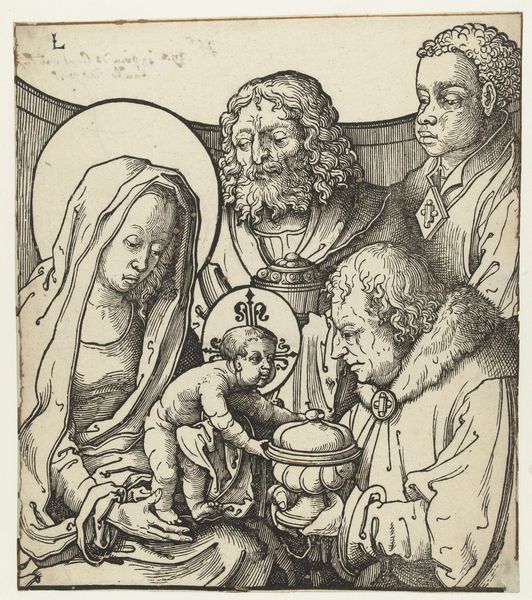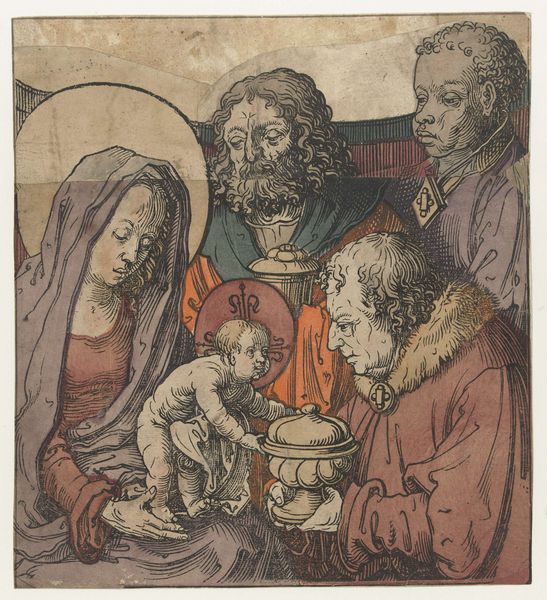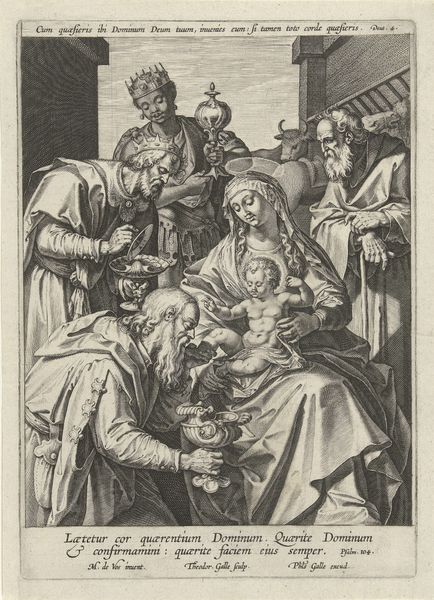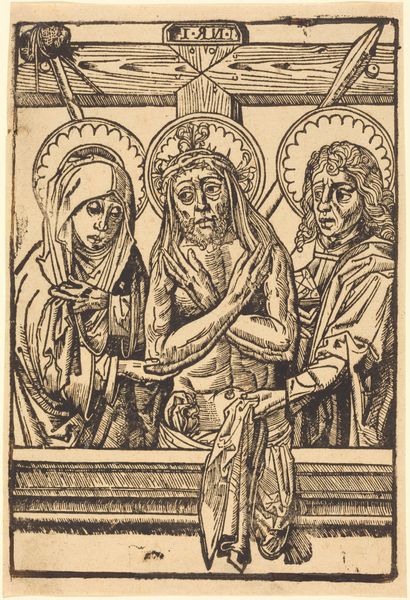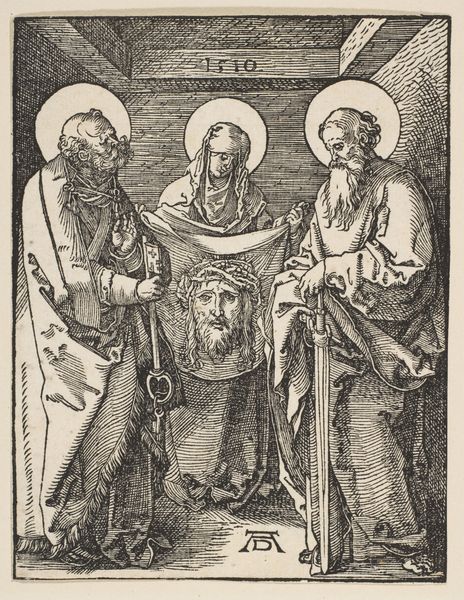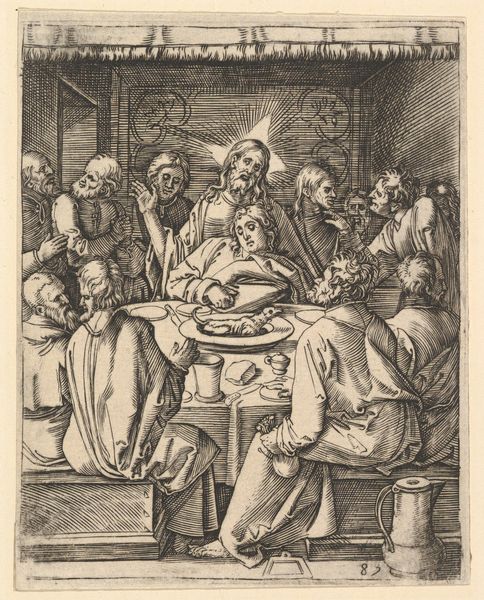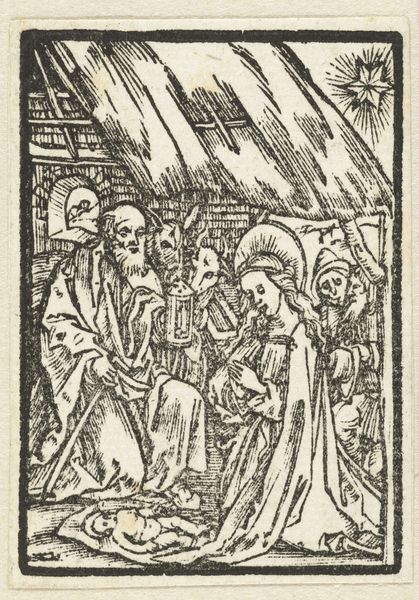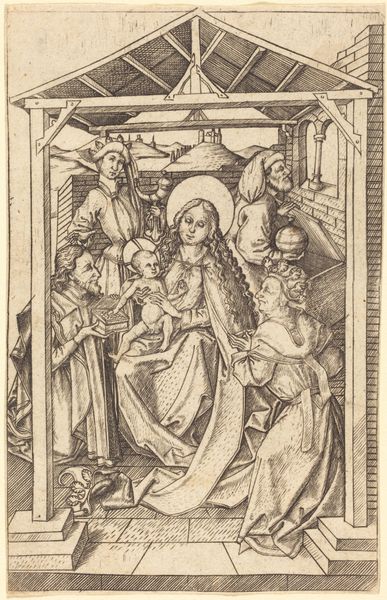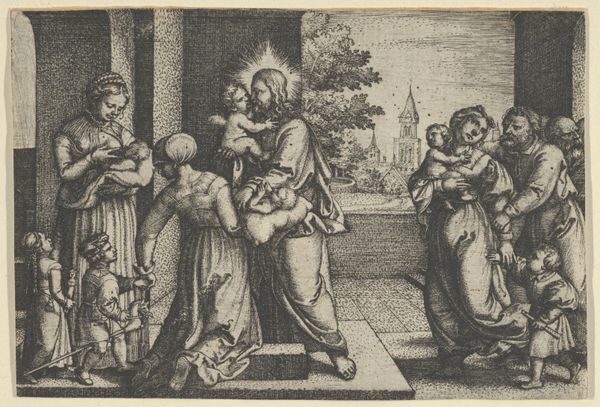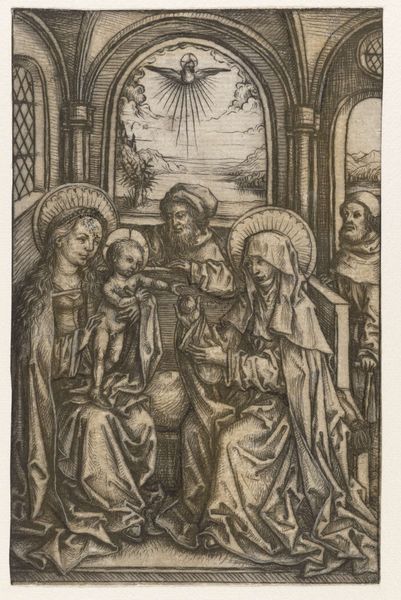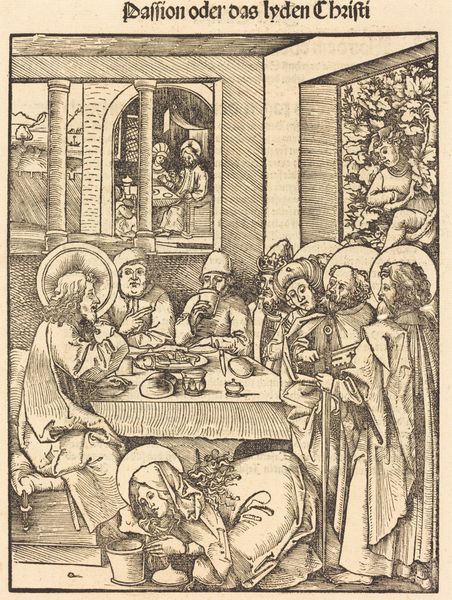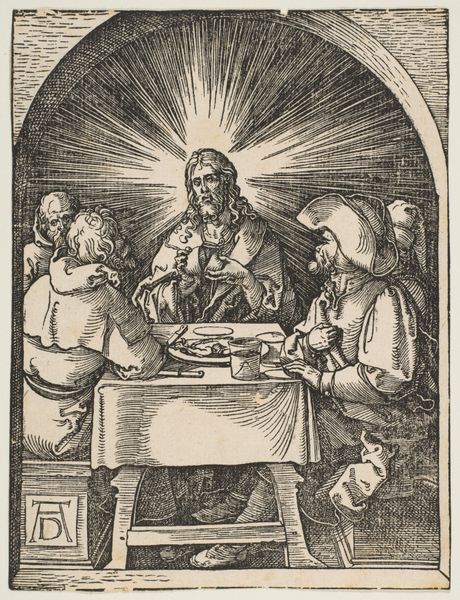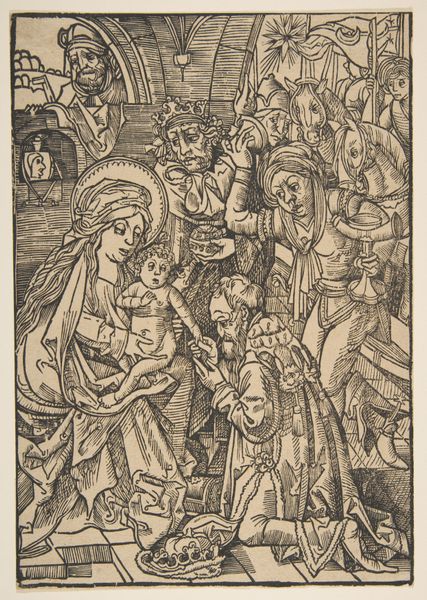
drawing, print, ink, engraving
#
drawing
#
ink drawing
# print
#
figuration
#
ink
#
history-painting
#
northern-renaissance
#
engraving
Copyright: National Gallery of Art: CC0 1.0
Editor: So, this is Lucas van Leyden's "The Adoration of the Magi," an engraving from around 1515. The detail achieved in ink is pretty striking. What do you see when you look at this piece? Curator: This engraving gives us a window into the complex social fabric of the Northern Renaissance. Van Leyden wasn't just depicting a biblical scene; he was engaging with the politics of representation. Look closely at the magi themselves. Editor: They look like... regular people, almost? Not idealized kings. Curator: Exactly. And that's a deliberate choice. Consider the role of patronage at the time. Who was van Leyden speaking to through these features? By rendering the Magi with such individual and almost contemporary features, he perhaps invites us to consider their authority, questioning their inherent right to power within a changing social order. Think of it as an early form of social commentary through portraiture. The African Magus is also quite revealing of period stereotypes. Does this echo contemporary representations? Editor: It's strange to think about something so "religious" also being about class and power. Curator: Religion, class, power, and identity were so deeply intertwined in the 16th century, much like they are today. Artists of this time operated within these intricate webs, and their works offer fascinating insights into these dynamics. How might viewing art from this period through an intersectional lens change our understanding? Editor: It gives the image a completely new layer, a critical edge I hadn’t expected! Curator: Precisely. Recognizing art's participation in larger societal narratives is critical for fostering informed dialogue.
Comments
No comments
Be the first to comment and join the conversation on the ultimate creative platform.
